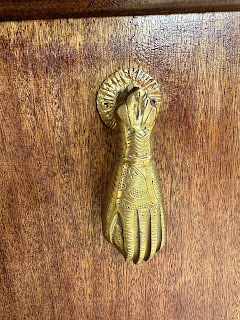Fatima Hands and Hamsas
The Fatima hand charm, also known as the Hamsa hand or Hand of Fatima, is a symbol that has a long history and significance in various cultures. It is named after Fatima Zahra, the daughter of the Islamic prophet Muhammad, and holds great religious and cultural significance for both Muslims and non-Muslims.
The Fatima hand charm carries deep historical and cultural significance, symbolizing protection, blessings, and spirituality across different cultures and religions.
The origins of the Fatima hand charm can be traced back to ancient Mesopotamia, where it was believed to offer protection against the evil eye and bring good luck. Throughout history, the charm has been adopted and adapted by different cultures and religions, including Judaism, Christianity, and Islam.
In Islam, the Hand of Fatima is considered a symbol of protection, blessings, and strength. It is often used as a talisman to ward off evil spirits and bring good fortune. The five fingers of the hand are believed to represent the five pillars of Islam: faith, prayer, fasting, pilgrimage, and charity.
The charm sometimes features an open hand with an eye in the center, known as the eye of God. The eye is believed to provide protection and serve as a symbol of divine power and watchfulness..
In Morocco you will find door knockers in the shape of a hand, offering protection to the household within.




Comments
Post a Comment